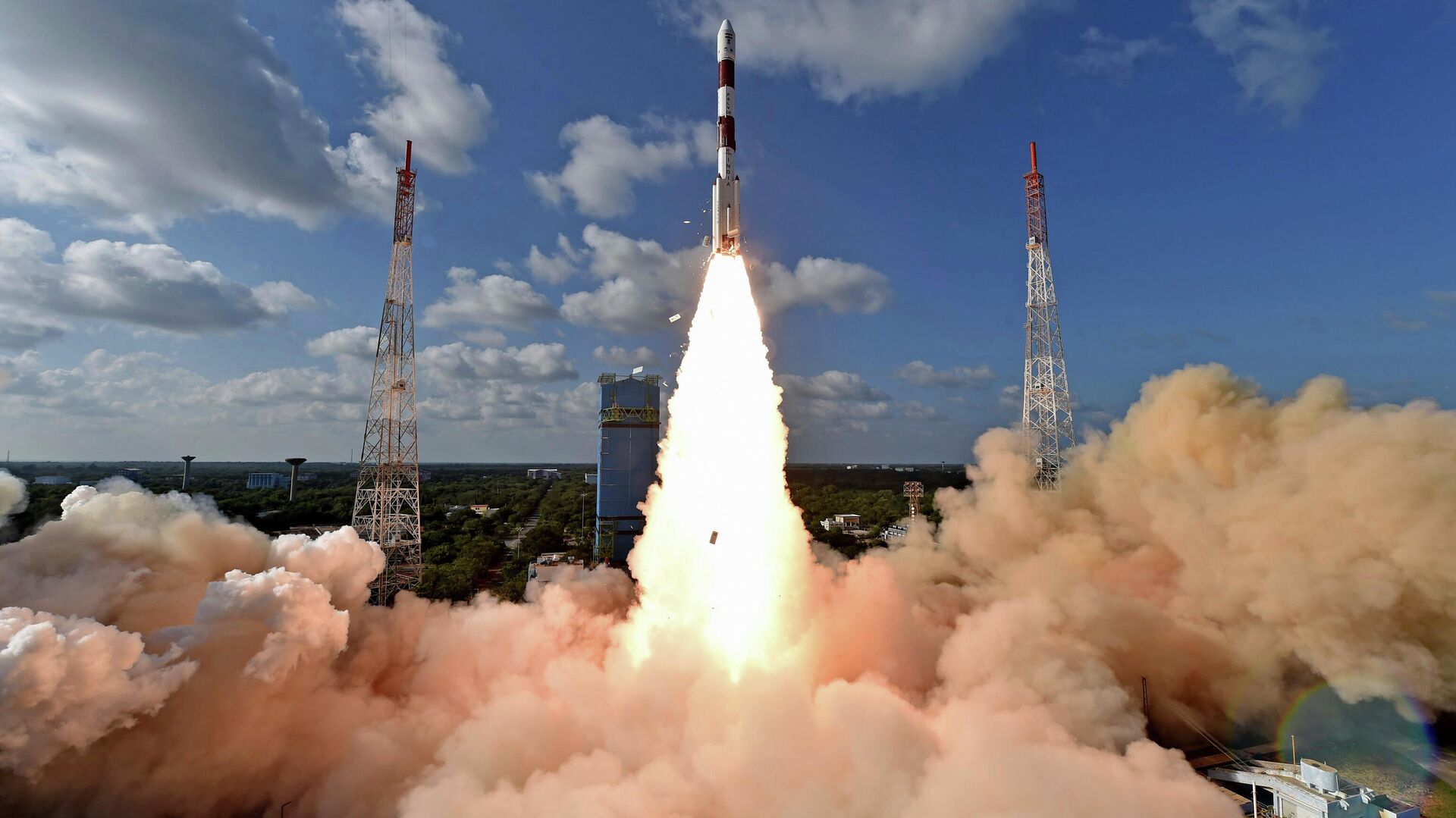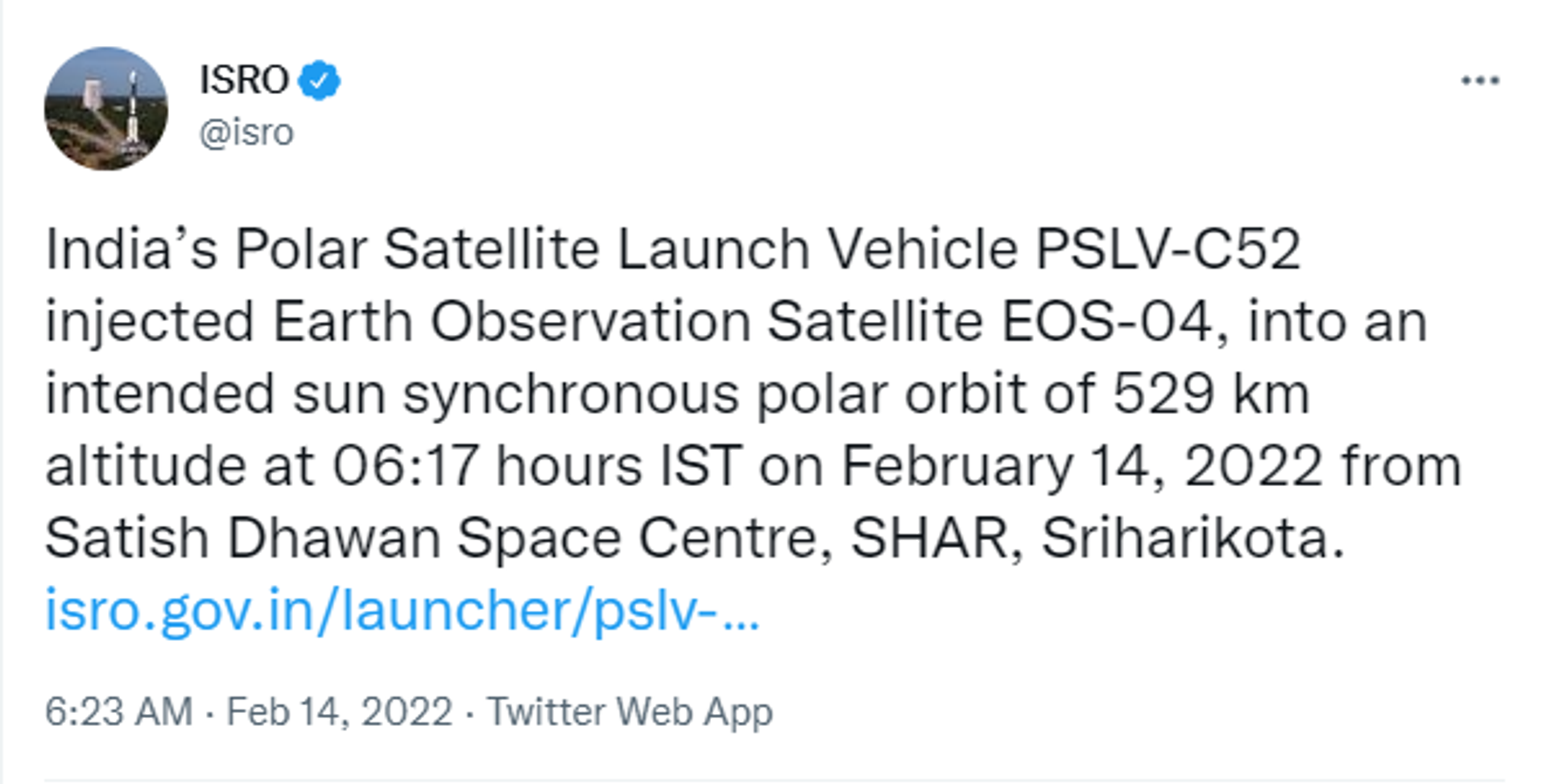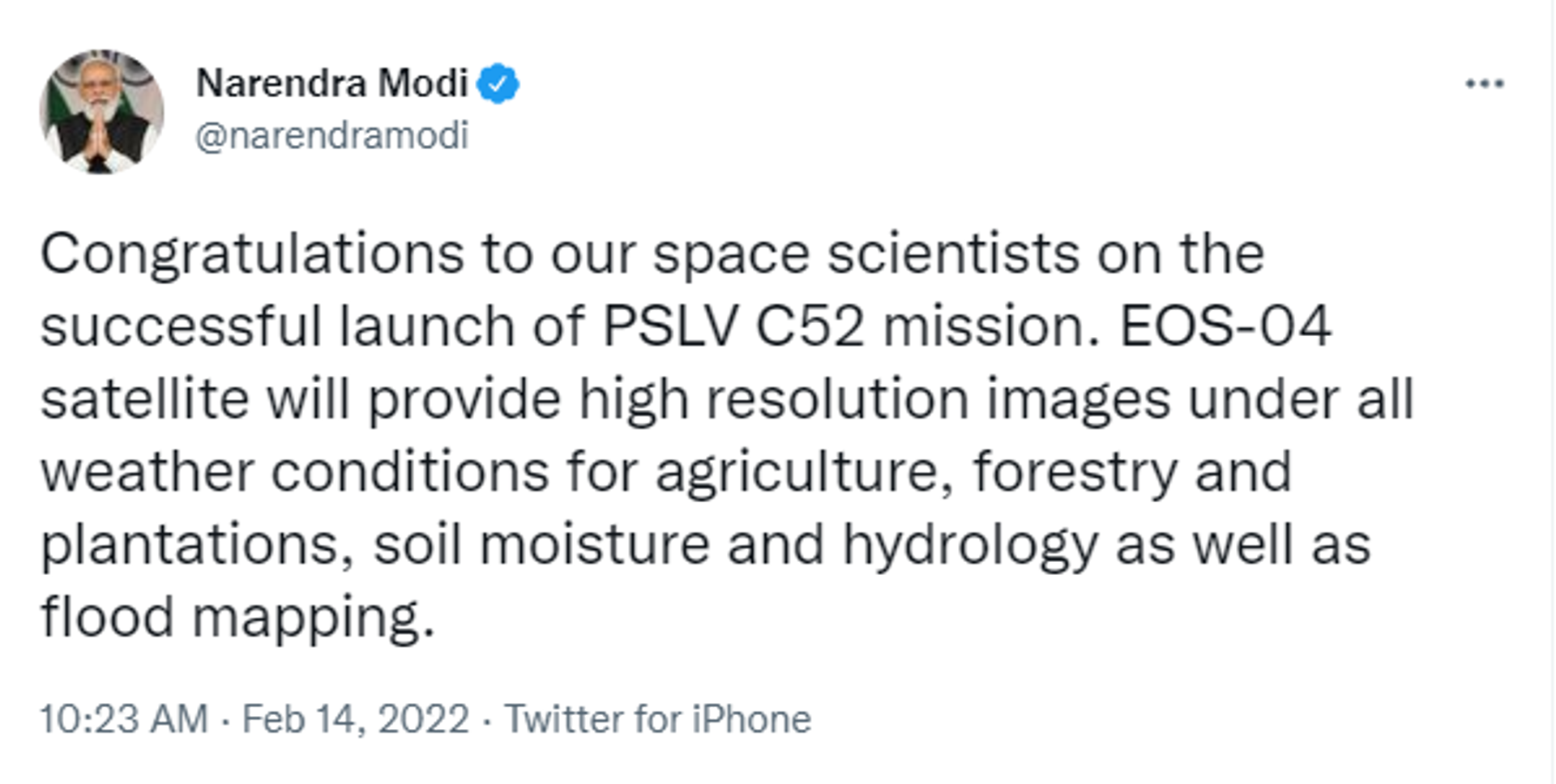https://sputnikglobe.com/20220214/taiwan-researchers-join-indian-space-agency-in-satellite-launch-mission-for-first-time-1093023352.html
Taiwan Researchers Join Indian Space Agency in Satellite Launch Mission For First Time
Taiwan Researchers Join Indian Space Agency in Satellite Launch Mission For First Time
Sputnik International
The launch of the Earth Observation Satellite (EOS-04), scheduled for September 2021, was delayed due to the pandemic as engineers and scientists were working... 14.02.2022, Sputnik International
2022-02-14T14:57+0000
2022-02-14T14:57+0000
2023-06-20T17:11+0000
narendra modi
narendra modi
venkaiah naidu
indian space research organization (isro)
indian space research organization
indian space agency
satellite
satellite imaging
pslv
polar satellite launch vehicle (pslv)
https://cdn1.img.sputnikglobe.com/img/07e6/02/0e/1093025304_0:160:3077:1890_1920x0_80_0_0_0a3e2d45979461c4de7893b499ebccff.jpg
The Indian Space Research Organisation (ISRO) on Monday launched a satellite, INSPIRESat-1, jointly developed by a team of international researchers, including from Taiwan, using a PSLV-52 carrier rocket. This is the first time ISRO launched a satellite developed by a team of international researchers.INSPIRESat-1, which stands for International Research and Teaching Satellite Project Satellite One, was developed by scientists from universities of the US, Taiwan, India, and Singapore.The PSLV-C52 rocket also carries Earth Observation Satellite (EOS-04), student satellite INSPIRESat, and a spacecraft dubbed INSAT-2DT, the precursor of a joint India-Bhutan mission in the future.The universities that took part in the launch are the University of Colorado's Laboratory for Atmospheric and Space Physics (LASP), the Indian Institute of Space Science and Technology (IIST), Taiwan's National Central University (NCU), and Singapore's Nanyang Technological University.“Polar Satellite Launch Vehicle PSLV-C52 placed two small satellites, a student satellite (INSPIREsat-1) from Indian Institute of Space Science & Technology (IIST) in association with Laboratory of Atmospheric & Space Physics at the University of Colorado, Boulder and a technology demonstrator satellite (INS-2TD) from ISRO, which is a precursor to India-Bhutan Joint Satellite (INS-2B)”, the space agency said in a statement.The satellite will provide information on the Sun's corona and its impact on Earth's ionosphere.Prime Minister Narendra Modi and Vice President M. Venkaiah Naidu congratulated the ISRO scientists on the successful launch.ISRO Chairman S. Somanath also congratulated the ISRO team for the precision with which the mission was accomplished.
Sputnik International
feedback@sputniknews.com
+74956456601
MIA „Rossiya Segodnya“
2022
Rahul Trivedi
https://cdn1.img.sputnikglobe.com/img/07e5/05/12/1082926121_0:-1:627:627_100x100_80_0_0_d882e1a63f627c25b7a534fb8b8234d7.jpg
Rahul Trivedi
https://cdn1.img.sputnikglobe.com/img/07e5/05/12/1082926121_0:-1:627:627_100x100_80_0_0_d882e1a63f627c25b7a534fb8b8234d7.jpg
News
en_EN
Sputnik International
feedback@sputniknews.com
+74956456601
MIA „Rossiya Segodnya“
Sputnik International
feedback@sputniknews.com
+74956456601
MIA „Rossiya Segodnya“
Rahul Trivedi
https://cdn1.img.sputnikglobe.com/img/07e5/05/12/1082926121_0:-1:627:627_100x100_80_0_0_d882e1a63f627c25b7a534fb8b8234d7.jpg
narendra modi, narendra modi, venkaiah naidu, indian space research organization (isro), indian space research organization, indian space agency, satellite, satellite imaging, pslv, polar satellite launch vehicle (pslv), space exploration
narendra modi, narendra modi, venkaiah naidu, indian space research organization (isro), indian space research organization, indian space agency, satellite, satellite imaging, pslv, polar satellite launch vehicle (pslv), space exploration
Taiwan Researchers Join Indian Space Agency in Satellite Launch Mission For First Time
14:57 GMT 14.02.2022 (Updated: 17:11 GMT 20.06.2023) The launch of the Earth Observation Satellite (EOS-04), scheduled for September 2021, was delayed due to the pandemic as engineers and scientists were working remotely. However, to make up for the delay, the Indian space agency has planned 19 missions, including a Moon landing, in 2022.
The
Indian Space Research Organisation (ISRO) on Monday launched a satellite, INSPIRESat-1, jointly developed by a team of international researchers, including from Taiwan, using a PSLV-52 carrier rocket. This is the first time ISRO launched a satellite developed by a team of international researchers.
INSPIRESat-1, which stands for International Research and Teaching Satellite Project Satellite One, was developed by scientists from universities of the US, Taiwan, India, and Singapore.
The PSLV-C52 rocket also carries Earth Observation Satellite (EOS-04), student satellite INSPIRESat, and a spacecraft dubbed INSAT-2DT, the precursor of a joint India-Bhutan mission in the future.
The universities that took part in the launch are the University of Colorado's Laboratory for Atmospheric and Space Physics (LASP), the Indian Institute of Space Science and Technology (IIST), Taiwan's National Central University (NCU), and Singapore's Nanyang Technological University.
“Polar Satellite Launch Vehicle PSLV-C52 placed two small satellites, a student satellite (INSPIREsat-1) from Indian Institute of Space Science & Technology (IIST) in association with Laboratory of Atmospheric & Space Physics at the University of Colorado, Boulder and a technology demonstrator satellite (INS-2TD) from ISRO, which is a precursor to India-Bhutan Joint Satellite (INS-2B)”, the space agency said in a statement.
The satellite will provide information on the
Sun's corona and its impact on Earth's ionosphere.
Prime Minister Narendra Modi and Vice President M. Venkaiah Naidu congratulated the ISRO scientists on the successful launch.
ISRO Chairman S. Somanath also congratulated the
ISRO team for the precision with which the mission was accomplished.





